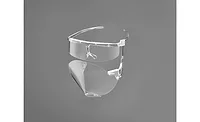UK FSA Testing of Raw Pet Food Shows Dogs, Cats at Medium Risk of Salmonella Infection

Image credit: Vivek Doshi via Unsplash
Preliminary results of testing and sampling of raw dog and cat food sold at retail across the UK has shown a high prevalence of significant foodborne pathogens, putting pets and pet owners at varying risk of infection by different bacteria, according to the UK Food Standards Agency (FSA).
Raw pet food is made from Category 3 Animal-By-Products (ABPs) that have been passed fit for human consumption in a slaughterhouse but are either surplus to human consumption needs or are not normally consumed by people in the UK. Since certain Category 3 ABPs are not subjected to preservation processes other than chilling or freezing, and because raw pet food is not cooked by the consumer, the final retail product can be contaminated with harmful microorganisms, including pathogens and antimicrobial-resistant (AMR) bacteria.
To investigate the microbial risk of raw pet food to pets and people, between March 2023 and February 2024, FSA collected 380 raw dog and cat food products on retail sale. The product samples and their packaging were tested for Salmonella, Campylobacter, methicillin-resistant Staphylococcus aureus (MRSA), Shiga toxin-producing Escherichia coli (STEC), and nonpathogenic E. coli. Although testing is not yet complete—only 306 of 380 samples have been tested and reported upon thus far—preliminary results have identified:
- Salmonella in 20 percent of samples
- Campylobacter in 11 percent of samples
- STEC in 11 percent of samples
- MRSA in 9 percent of samples.
Additionally, swabbing and testing of the outer packaging of a subset of the products sampled found Salmonella on 0.6 percent of packages and Campylobacter on 0.6 percent of packages.
Using the prevalence data collected from its sampling and testing activities, FSA calculated pets’ and owners’ risk of exposure to foodborne pathogens, accounting for multidimensional factors like the pH and water activity of the products, and the optimal temperatures for pathogen growth and enterotoxin production. FSA estimates that:
- Salmonella in raw pet food poses a medium risk of infection to both dogs and cats
- Campylobacter in raw pet food poses a low risk of infection to dogs and cats
- STEC in raw pet food poses a low risk of infection to dogs and a very low risk of infection to cats.
If infected, however, pet illness would be most severe if caused by Salmonella.
For pet owners, Salmonella, Campylobacter, MRSA, and STEC were estimated to present a low or very low risk of infection through handling food or through contact with an infected pet.
Several key uncertainties remain about the results of FSA’s sampling and testing. Specifically, the uncertainty around prevalence and symptoms of clinical infection in companion animals is great, as there is less research published on animal health compared to human disease. Additionally, because of a lack of data on MRSA infection in cats, FSA was unable to establish a risk level. There is also uncertainty around how raw pet food is handled at home by pet owners, including storage and preparation behaviors.
Looking for quick answers on food safety topics?
Try Ask FSM, our new smart AI search tool.
Ask FSM →









